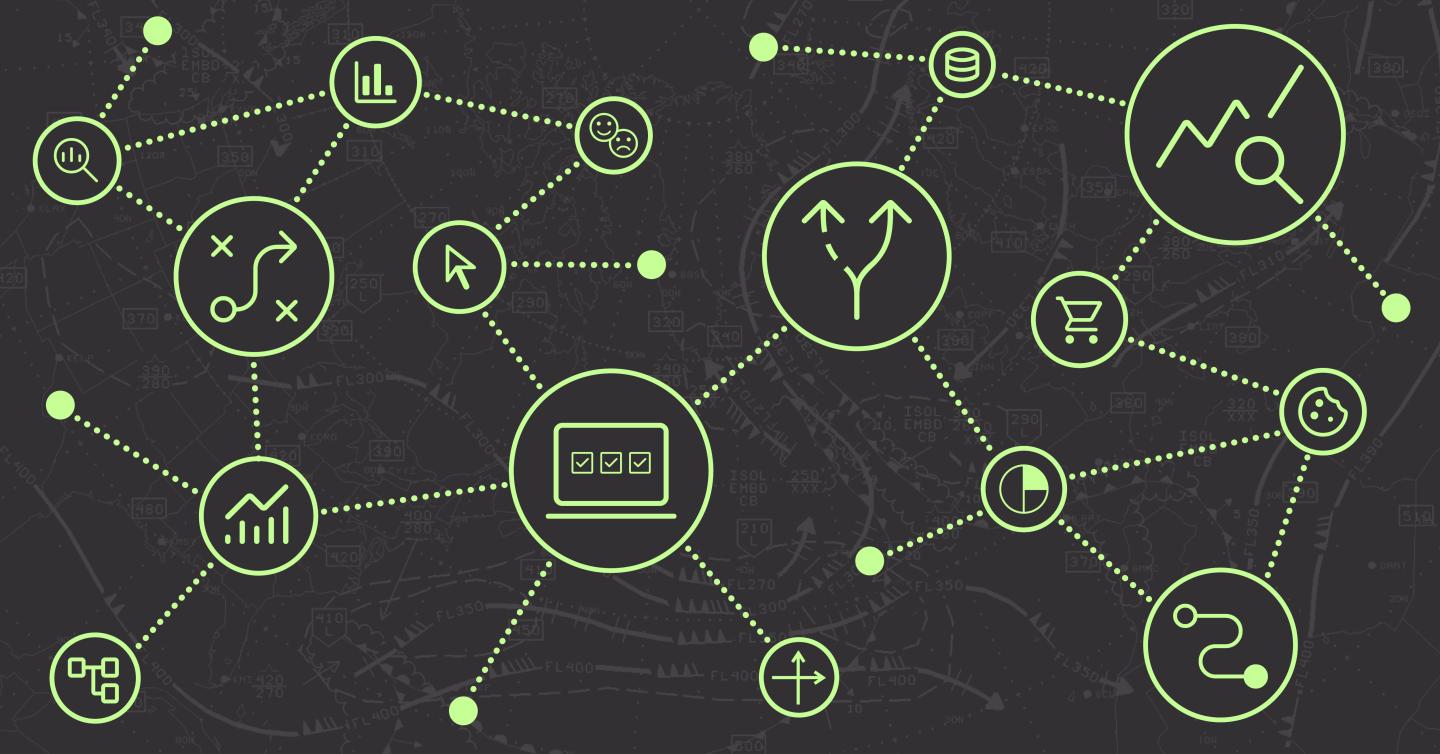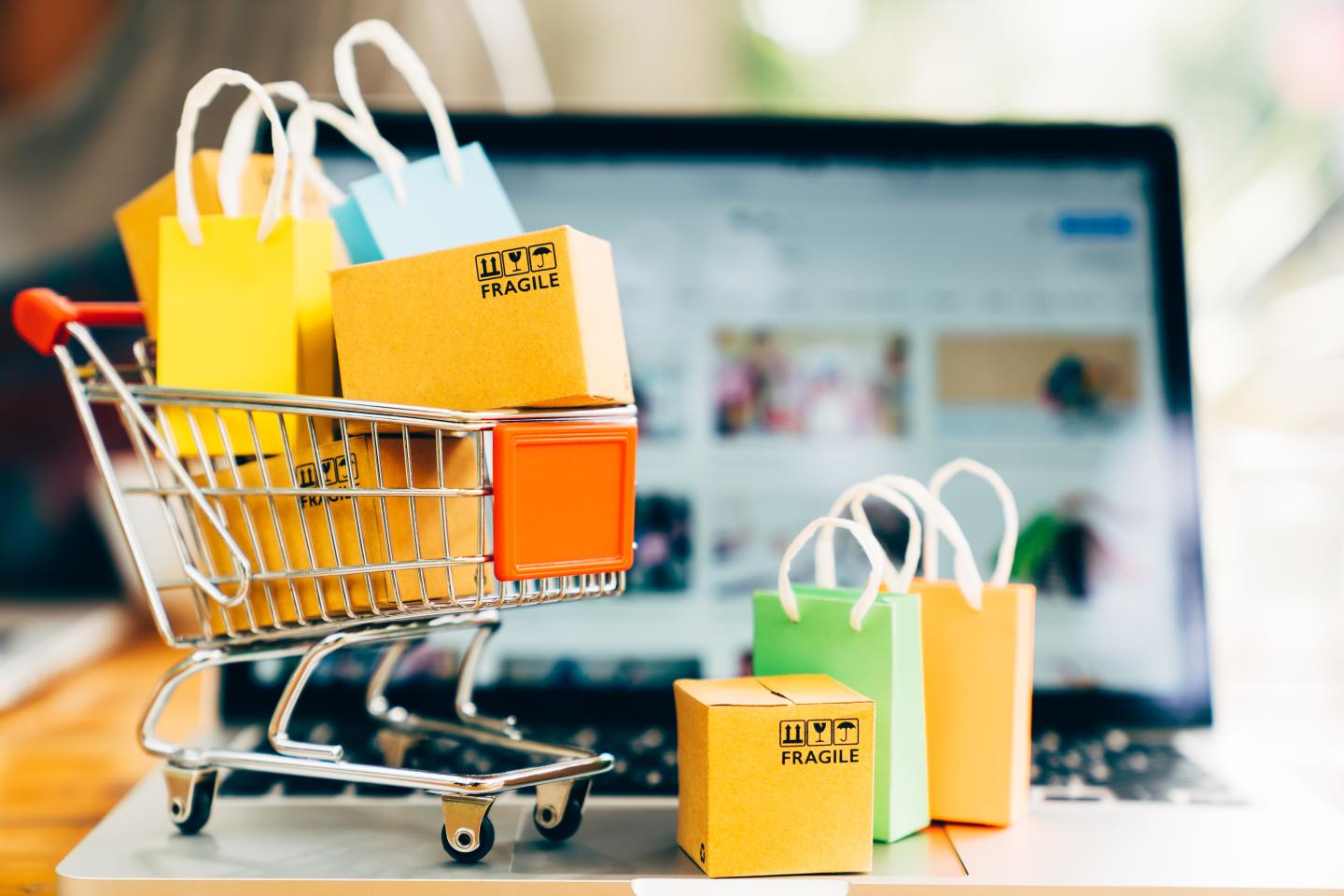2020 Recovery and the Future of E-Commerce

Whether it was a bit more time with your houseplants, developing an arguably dependent relationship with your dog or redefining social distancing by exploring the outdoors, 2020 certainly shook things up. As Backbone continues to process and monitor the evolving media and e-commerce landscape, it’s clear that 2020 was monumental when it comes to the acceleration of DTC growth and maturation of online purchase habits. In the following analysis, we’re taking a deep dive into data from the last three years (2019-2021) to examine the impacts of how 2020 changed the future of e-commerce and digital media as we begin to recover from the COVID-19 pandemic.
Site Traffic
Reporting Google Analytics site sessions from a cross section of our digital media clients, 2019 was nothing but ordinary: we see a steady pulse of consumers browsing with nominal spikes in traffic surrounding key consumer holidays and sales. As we discussed in a 2020 mid-year report, we saw a massive spike in owned site traffic beginning mid-March 2020 (+26% YoY). The increase in content consumption has continued into 2021 but at a slower growth rate: the first half of 2021 reports a 10% increase in sessions YoY. March 2021, however, shows a notable 10% dip in overall site sessions, compared to March 2020. This swing is likely due to the rollout of the COVID-19 vaccine, resulting in nearly 1 in 5 Americans considering life already back to normal. The vaccine is inspiring consumers to cut the cord with their houseplants, return to brick-and-mortar shopping and brush up on social skills. A recent consumer trends study shows that in-store browsing has increased 27% since the winter, and consumers are now much more willing to gather at crowded activities.
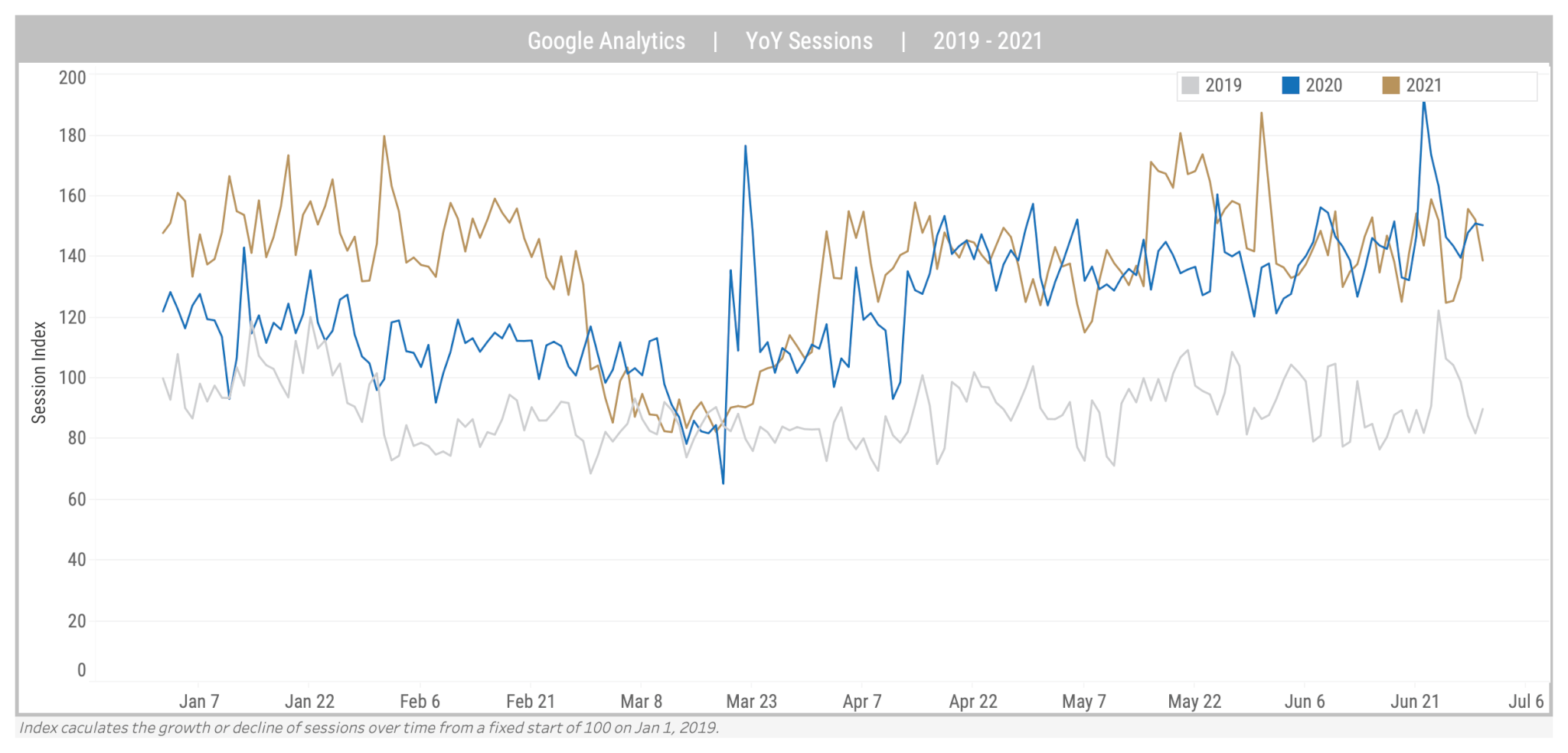
Consumer trend source: Resonate COVID-19 and Emerging Trends Consumer Flash Study, July 202
Purchase Behavior: Conversion Rates and Revenue
Despite becoming more comfortable outside the home, consumers continue to spend large amounts time online (up 2% YoY), and conversion rates continue to follow a similar trajectory to 2020 (up 4% YoY and 29% higher than 2019 YTD). With conversion rates still climbing in 2021 (4% higher January through July 2021 vs. 2020), the data is proving that consumers have adapted to and adopted the convenience of DTC. While consumers have shifted back to in-person grocery shopping, products like electronics and clothing remain popular items to shop for online, among others.
Although this may be a seemingly rudimentary concept, 2020 was the impetus for many outdoor retailers to rapidly mature their DTC platforms and online consumer experience to adapt for the future of e-commerce. The consistent climb in conversion rate over the last three years is a testament to the value of building a successful DTC platform and a welcomed hoorah following the trials and tribulations that brands and online retailers faced over the last 18 months in order to keep up with consumer demand.
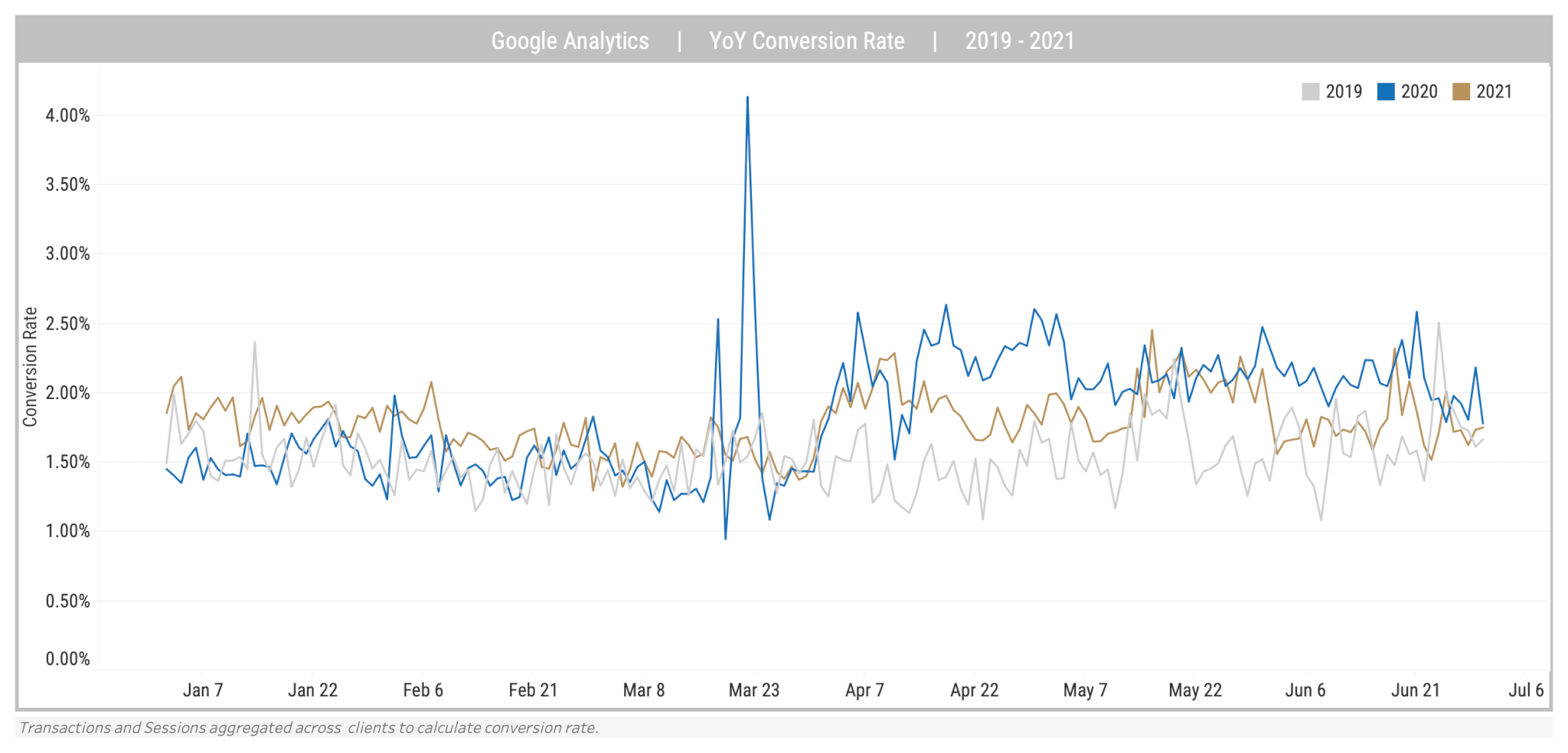
Time spent online source: eMarketer
Online shopping source: Resonate COVID-19 and Emerging Trends Consumer Flash Study July 2021
Perhaps more jarring than a steady increase in overall conversion rates is the sheer revenue that DTC e-commerce has generated. Within two short years, Backbone has witnessed a 110% increase in revenue from e-commerce sales and 34% increase in revenue YoY. Not only are consumers fully adjusted to the online experience, but the comfort level has followed suit with purchase volume and value. Looking toward the future of e-commerce, overall DTC revenue is expected to retain 20-30% of growth it saw from the height of the pandemic (Mastercard).
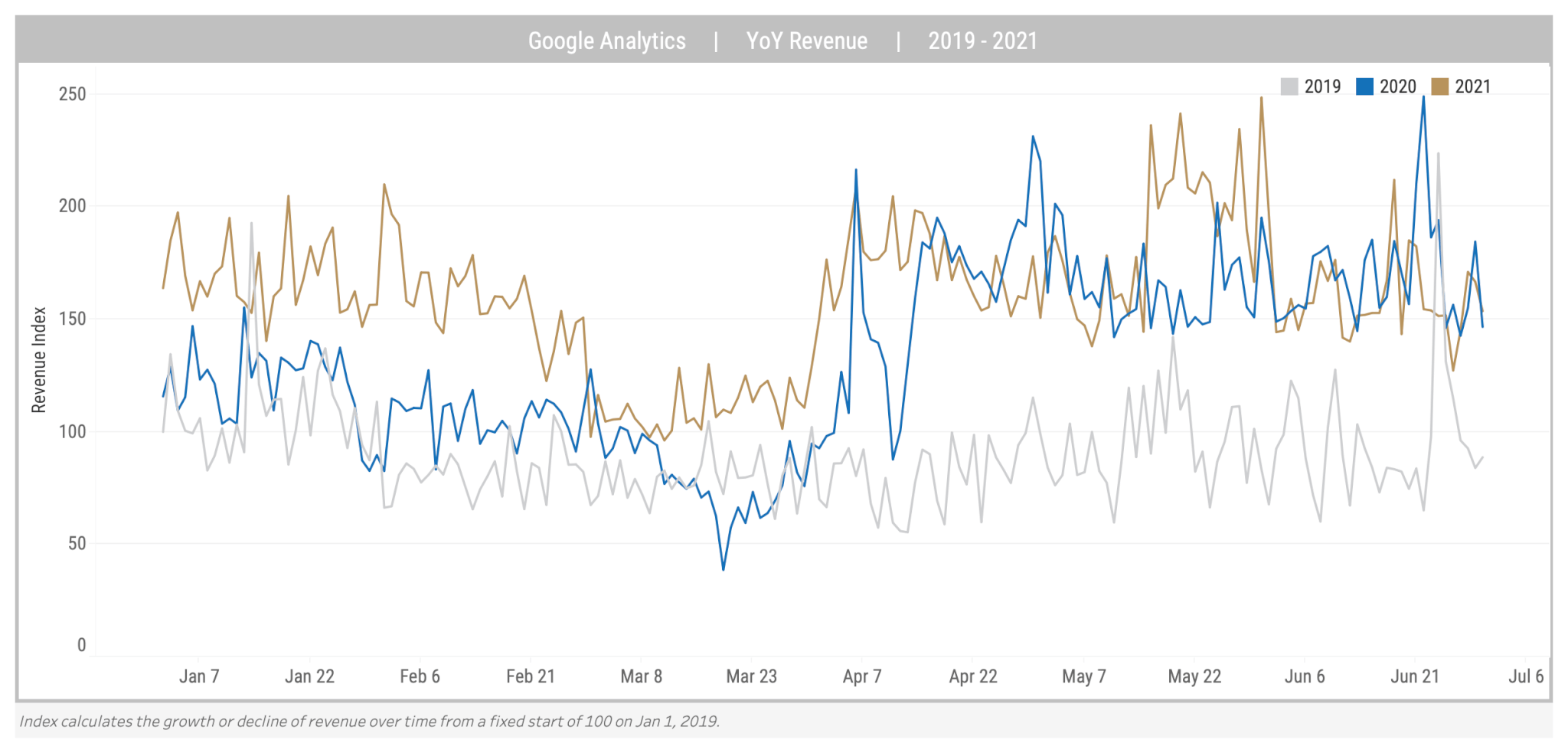
The Price of E-Commerce
2020’s increase in media consumption was represented by the decrease of digital media CPMs over 2019. Comparatively, 2021 is experiencing an increase in digital media competition to capture the demand of online consumers. This is having the reverse effect on digital CPMs as rates are noticeably higher January-June 2021 compared to the previous two years:
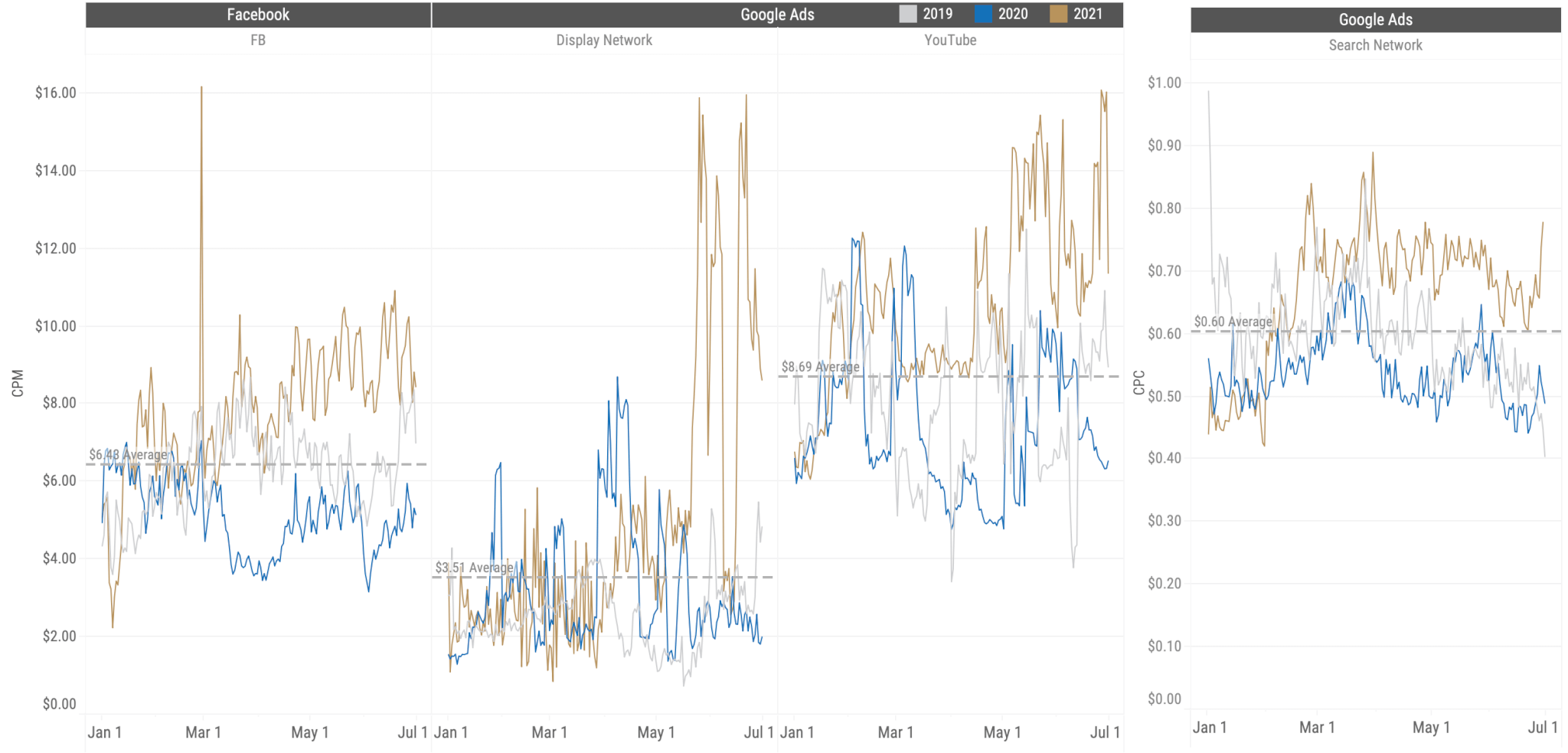
This could be attributed to a variety of factors:
- Simply more competition/brands in the digital media landscape: Online traffic/inventory has dipped in the last year but demand from advertisers have stayed the same YoY.
- Interest in the outdoors has skyrocketed in the last 18 months, further increasing the competition within the outdoor industry advertising space.
- Travel and tourism brands are back in-market now that travel restrictions are lifting.
- A number of advertisers are back on the Facebook platform, after having paused marketing spend in Summer of 2020 in protest to how the company was managing social and political issues.
- Privacy changes and targeting/tracking impairments, such as iOS14, are making it harder for brands to reach niche audiences, thus driving rates up.
As a result of these factors, the 2020 base costs are artificially low, and it is useful to compare costs on a 2-3 year trend. For example, when compared to CPMs in 2019, CPMs are only up 28.43%.
Preparing for the Future of E-Commerce
For Backbone’s clients, the onset of COVID-19 recovery means higher digital media costs but continued increase in DTC demand and, ultimately, conversions. 2020 prepared brands for the future of e-commerce by forcing the development of sophisticated online consumer journeys and internal reporting accountability. Although consumers are exploring brands via brick-and-mortar again, many are still converting online due to convenience and direct relationships with brands. To account for this shift in consumption, Backbone continues to develop performance media strategies to help move the needle for our clients:
- Diversify media spend across platforms: Social consumption is not focused on Facebook and Instagram. Platforms like Snapchat, Pinterest and TikTok and rapidly gaining market share and evolving their advertising offerings.
- Protect, manage and execute against first-party data: With cookies expected to become extinct by 2023, owned data is crucial for continuing relationships with loyal customers. Subsequently, iOS14 updates have made it more expensive to find a brand’s owned audience organically. Media channels outside of social, such as connected TV, are expanding their capabilities in order to digest and serve against first-party data.
- Put a premium on the message: Whether it’s owned branded content, sponsored content or a simple campaign, it’s crucial that the media in market is working hard from every aspect. Feeding into SEO and platform algorithms — and optimizing creative for such — could be the difference between mediocre and strong ROAS.
- Don’t lose sight of the full-funnel and offline channels: With tracking, privacy and targeting capabilities forever evolving (sometimes for the worse, from a digital advertiser’s point of view), it’s imperative to consider a strong mix of both digital and offline channels for prospecting. Implementing a multi-touch attribution or marketing mix model can help provide insight into performance and give direction on the right cross-channel strategy for the brand.
This report on is part of a series of updates that provide data-driven insights and experience-based anecdotes. If you have feedback or questions, please send us a note at info@backbone.media.
